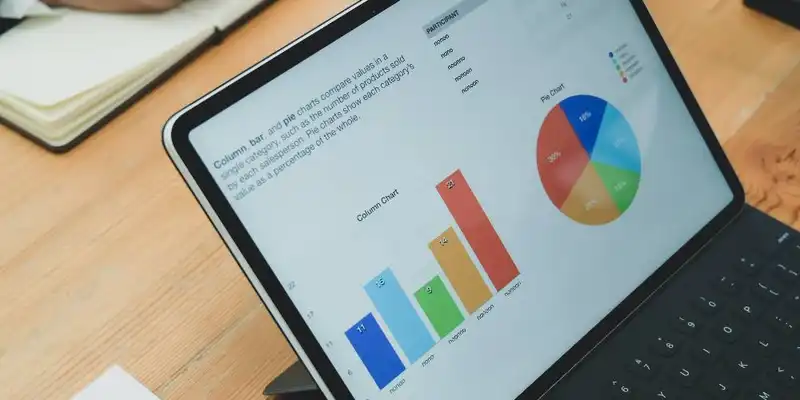5 Ways to Create a Data-Driven Strategy & Leverage Business Analytics
A collective database enables businesses to determine how they can improve their operations and growth through a well-rounded knowledge of their overall performance. By using data such as business insights and real-time information, organizations can develop a data-driven strategy that outlines a plan of action to improve front or back-office operations.
This data-driven decision making gives companies a competitive advantage, as it equips management with detailed insights, such as customer data, which allows them to personalize experiences while meeting short and long term goals.
What is a Data-Driven Strategy?

Data-driven strategies help companies make better business decisions by interpreting big data and analyses. A business strategy may seek to improve supply chain stages, such as production and order fulfillment efficiency, or enhance customer satisfaction by innovating customized experiences. Regardless of the focus, making data-driven decisions ensures management understands why changes are being implemented and how it will improve the function.
In order to formulate an effective data-driven strategy, businesses should consider four main tips-
- An impactful strategy should be based on business objectives and not on technological initiatives. While technology helps to generate reports, management should be the ones to develop strategies and make final decisions.
- The data should be secure, accurate, and up to date to ensure its relevancy to the specific operation at hand. If the information is inaccurate or outdated, incorrect insights are generated, leading to ineffective strategies and business decisions.
- Advanced data management functions such as a predictive analytics tool and point-of-sale (POS) system can help provide insights on internal operations by generating detailed reports. Many tools can also convert information into visual aids such as graphs, charts, and tables, making data more comprehensive.
- In order for an organization to become data-driven, it must create a conducive work environment. Each department should be trained on acknowledging insights within their operations and interpreting data. Creating this culture supports the thought-process of seeking to further improve performance based on factual evidence.
5 Ways to Leverage Data With Strategic Planning

A study by McKinsey & Company found that companies that use data-driven strategies improved their productivity by 5% and increased their profits by 6%. While the benefits of data analytics are apparent, many businesses aren't sure of how to collect and use big data.
Generally speaking, there are 5 common ways a company can leverage its data analysis and strategies.
1. Gain Insights from Internal and External Data
As technology grows and expands to every aspect of business life, more data channels are introduced and waiting to be discovered. For companies with automated software, system processes, such as inventory control services, hold a wide range of raw data that can be processed and used for actionable insights. Information on inventory turnover rates, peaks in demand, and prices can be monitored so management can find what actions can help save capital and time.
Companies can also collect external data from social media, online reviews, and customer interactions to gain new perspectives. Although usually qualitative, this information allows management to learn the habits, behaviors, and viewpoints of consumers. From these insights, functions such as marketing and customer experience can be personalized to target specific demographics and consumers.
2. Break Down Information Silos
Before integration solutions and big data, much of enterprise data were categorized into silos assigned to specific departments. This lack of information sharing limits internal communication, making it difficult for organizations to monitor metrics from each data source.
Fortunately, advanced integration and analytic platforms break down these silos, enhancing information exchange and communication throughout a company. As a result, departments can combine their insights to create a data-driven strategy. For example, inventory and sales management teams can collaborate data to discuss peak seasons, turnover rates, and stock levels to determine how to lower expenses and improve profits.

3. Optimize the Sales Funnel
A sales funnel is the process a person completes in order to become a company's customer. Within this process, businesses can discover metrics regarding traffic, leads, and sales, allowing management to determine how to increase customer loyalty, sales, and profits.
Through the use of machine learning technology, data from the sales funnel can also be entered into a forecasting system to project future customer returns, sales, and revenue. The collection of this information allows businesses to determine what operation to invest their time and capital in to promote profitability.
4. Forecast and Enhance Business Outcomes
Another primary goal of collecting data is gaining insight into future outcomes using predictive models such as forecasting software. For example, demand forecasting solutions take real-time quantities from inventory and point-of-sale (POS) systems to monitor customer behavior and predict future item demand. By converting this raw data into insights, management teams can prepare for peaks and dips in demand by optimizing stock levels and creating targeted marketing strategies.
Amazon uses predictive analytics data to present recommended items to customers based on their purchase histories and the behavior of consumers that bought similar products. This increases the likelihood of additional purchases, promoting customer experience and revenue.
5. Transform the Company
According to "Performance Management- Putting Research into Action," nearly 86% of employees do not understand their company's strategy. As big data continuously evolves, it can become challenging to keep up with and adapt to the company strategy. However, it is essential for employees to be aligned with the business's mission.
A data-driven business should create a data-driven culture that promotes the use of reports, analyses, and diverse forms of information to enhance decision-making. Implementing integrated systems allows all departments to work in unison through streamlined communication and exchange of company data. Project management teams can then easily access relevant data and develop plans of action for improving their operation's functionality.
Becoming data-driven requires companies to collect and examine reports from every internal operation to create an effective process improvement plan. Businesses must also properly train employees to have data-driven mindsets that seek quantitative and qualitative evidence to make better decisions. By implementing these practices, companies can take advantage of the many benefits data science provides.





